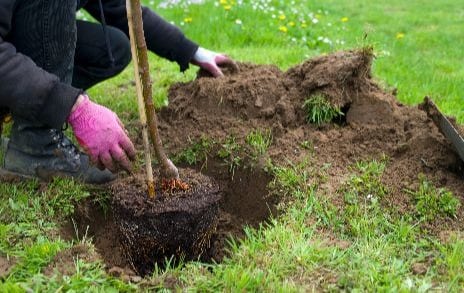Winter borders can be a joy to look at. Winter planting with bright coloured stems, seed heads from summer flowering plants, fresh winter flowers and evergreen shrubs all contributing to a colourful, interesting garden.
Make a move
Winter is also a good time to move trees and shrubs that you think would look better growing elsewhere in the garden.
This is best done with deciduous plants whilst they are dormant between late November and February. The younger the plant, generally the easier it will be to establish it elsewhere.

Before moving it’s important to check that the soil is suitable i.e. not frozen or waterlogged.
Pre-dig a hole for the new planting position. If necessary, tie up arching branches with string before digging out the plant and moving to its new position.
Plant at the same depth as before, remove the string, firm in and water well. Then, surround the base of the newly moved plant with a thick layer of mulch to retain soil moisture and keep weeds at bay.
Bare necessities

Winter is the time of year when a lot of plant nurseries sell plants and shrubs bare rooted. These are plants that are freshly dug up, soil removed from roots and supplied without containers.
Some plant experts believe that bare root plants establish quicker in the ground than containerised ones. They’re also cheaper to buy and are a great way of acquiring a large number of cheap plants. These are useful for establishing a new hedge or filling gaps of an existing one.
Roses are also sold bare rooted as well as trees and some perennials such as lily of the valley.
Potted perennials
If you’ve had perennial plants that are crowded in a pot, you could also split the root ball into several sections. This will give you more plants for the border – just make sure each section retains roots when splitting.
Another thing to check when planting out pot grown plants now is that the plant hasn’t been attacked by vine weevil grubs.

A tell-tale sign is if the soil is really loose when taking plant out of the pot and roots fall away into the soil. On closer inspection the distinctive light cream coloured vine weevil grubs with their darker colour caramel head may be visible.
It may be possible to save the plant by washing all trace of soil and grubs from the roots. However, the infected soil should be disposed of in green waste recycling bin and not in your compost heap or flower border.

Leave A Comment